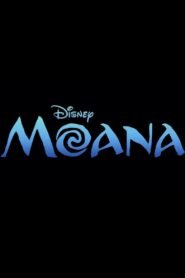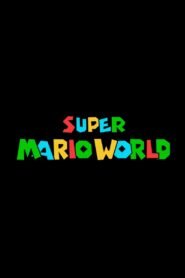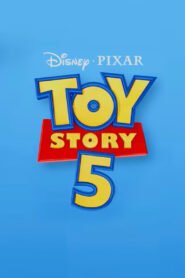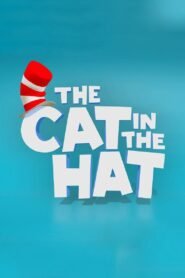

Synopsis
In 2026, Russian animation fans and global audiences alike are in for a nostalgic yet fresh treat with the release of Prostokvashino (2026)—the latest installment in one of Russia’s most beloved animated franchises. First made popular through the Three from Prostokvashino trilogy in the late 1970s and 1980s, and revitalized in recent years with a rebooted series, Prostokvashino has become more than just a cartoon—it’s a cultural phenomenon.
This 2026 installment is not just another episode or webisode. It’s a full-length animated feature, promising to capture the essence of the original while adapting it for the modern world. With updated visuals, a heartwarming story, and familiar characters, this film seeks to balance nostalgia and innovation.
A Brief History of Prostokvashino
Before diving into the 2026 edition, it’s important to understand the legacy behind Prostokvashino. Originating from the short story “Uncle Fyodor, His Dog and His Cat” by Eduard Uspensky, the original animated trilogy (1978–1984) became an instant classic in the Soviet Union.
Set in a fictional rural village, Prostokvashino, the story follows Uncle Fyodor, a serious little boy who runs away from home to live with a talking cat named Matroskin and a dog named Sharik. The trio finds joy in the simple countryside life, learning about friendship, freedom, and responsibility.
These animations were known for their witty dialogue, clever social commentary, and charming animation style—qualities that made them timeless across generations.
What’s New in the 2026 Film?
Unlike the recent short episodes released online, the 2026 film is a cinematic continuation of the rebooted storyline. It still honors the original characters but pushes the story forward, offering a new adventure with deeper emotional themes and modern challenges.
The film reimagines Prostokvashino as a village caught between tradition and change, much like rural towns across the world. The core story follows Uncle Fyodor—now a teenager—dealing with growing pains, technological change, and a shifting sense of home.
At its heart, though, it’s still about friendship, family, and the joys of countryside simplicity.
Characters: Familiar Faces, Fresh Dynamics
Here’s a closer look at the beloved characters making their return:
Uncle Fyodor
Now older and facing the realities of adolescence, Fyodor begins to question where he belongs. Does he stay in Prostokvashino or return to the city? His arc reflects the internal conflict of growing up—the desire to hold onto childhood while stepping into maturity.
Cat Matroskin
Still as sarcastic and practical as ever, Matroskin represents the voice of reason. In this film, he starts to embrace technology in hilarious ways, like trying to farm using smart apps and drones—much to Sharik’s confusion.
Sharik the Dog
Sharik, ever the dreamer, wants to become an influencer in this version. With his loyal heart and goofy charm, he provides comic relief while unexpectedly going viral online for his countryside photography.
Postman Pechkin
One of the franchise’s most iconic supporting characters, Pechkin now moonlights as a blogger, trying to document life in Prostokvashino. He’s still nosy but a bit more modern—and surprisingly tech-savvy.
Themes of the 2026 Movie
The film cleverly mixes classic moral lessons with themes relevant to today’s world. These include:
- Urban vs. rural life – Can tradition and modernity coexist?
- Technology and simplicity – Does embracing the digital world mean losing one’s roots?
- Friendship across generations – What keeps relationships strong as people grow and change?
- Environmental awareness – The new Prostokvashino deals with sustainability, farming, and respecting nature.
Animation Style: Tradition Meets Technology
The animation of Prostokvashino (2026) is visually upgraded, using a rich blend of 2D charm and modern animation tools. The aesthetic maintains the hand-drawn warmth of the original series but with smoother motion, enhanced backgrounds, and expressive character detail.
From golden wheat fields to rustic cottages, every scene in the movie feels like a living painting. It’s a love letter to the Russian countryside—evocative, calming, and full of life.
Voice Cast and Soundtrack
Returning voice actors bring a sense of continuity and nostalgia, while fresh voices add youthful energy. The film also features a memorable musical score, mixing folk tunes, acoustic guitar, and orchestral flourishes.
The theme song of the 2026 film, sung by a popular Russian artist, captures the spirit of Prostokvashino—melancholic yet hopeful, funny yet wise.
Audience and Cultural Impact
While Prostokvashino (2026) is clearly aimed at children and families, it’s loaded with references and emotional cues for adults who grew up with the original series. It becomes a cross-generational experience, where parents and kids can bond over characters and stories that never go out of style.
In an age where many animated films chase fast-paced gags or massive world-ending stakes, Prostokvashino offers a gentle, reflective escape. It reminds viewers of the value of stillness, kindness, and community.
Why It Matters
The release of Prostokvashino (2026) isn’t just another cartoon premiere. It’s a cultural milestone. In many ways, Prostokvashino is Russia’s answer to Winnie the Pooh or Asterix—a symbol of innocence, humor, and wisdom wrapped in simple storytelling.
By bringing the franchise into the modern age without losing its soul, the creators have done something remarkable: they’ve made Prostokvashino feel both timely and timeless.
Final Thoughts
Prostokvashino (2026) is more than just an animated feature—it’s a celebration of heritage, humor, and heart. It bridges generations, invites reflection, and gently nudges us to appreciate the beauty of quiet moments.
With stunning animation, a thoughtful story, and characters we’ve grown to love, this film is set to reignite the charm of Prostokvashino for a new era, while reminding older fans why they fell in love with it in the first place.
So whether you’re a long-time fan or discovering the village for the first time, pack your suitcase (don’t forget Matroskin’s cheese!)—because Prostokvashino is calling once again.
FAQs
1. Is Prostokvashino (2026) a reboot or sequel?
It’s a modern continuation of the rebooted series, but with deeper storytelling and a feature-length format.
2. Can new viewers enjoy the movie without seeing the older episodes?
Absolutely! The story is self-contained, though long-time fans will catch plenty of nostalgic callbacks.
3. Will the animation style be the same as the classic version?
The film uses modern animation but retains the warmth and character design of the originals.
4. What age group is the film suitable for?
It’s perfect for kids and adults alike—family-friendly with meaningful themes for older audiences.
5. Is it being released globally?
While it’s primarily aimed at Russian audiences, international subtitles and possible streaming releases are expected later.
Original title Простоквашино
IMDb Rating n/A n/A votes
Director
Director






















